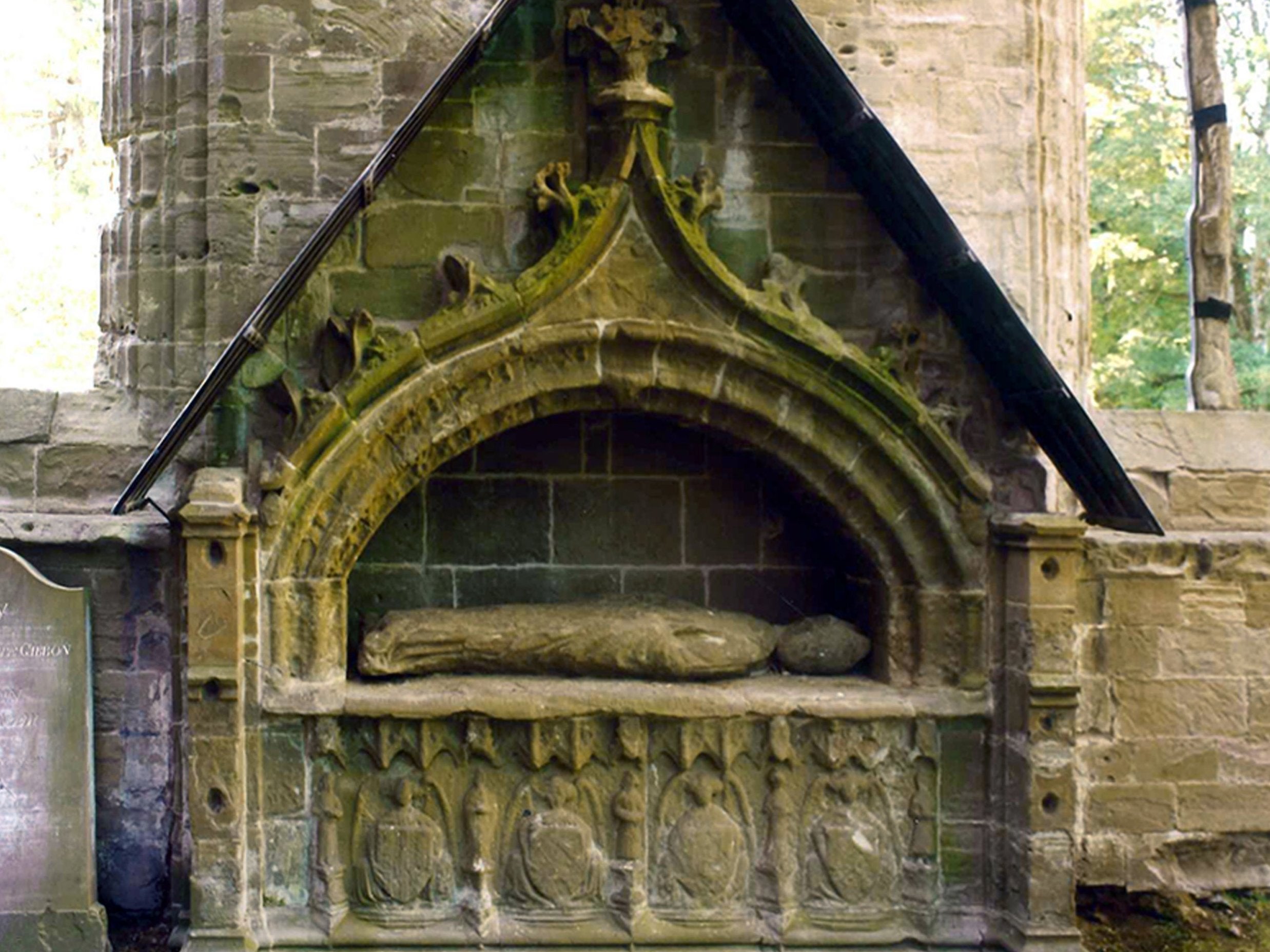Ancient stone carvings hidden for 600 years discovered on tomb in Scottish cathedral
'This discovery also hints that there may still be other obscured areas of detail preserved within the walls behind the tomb'

Stone carvings that have remained hidden for 600 years have been discovered on the tomb of a medieval bishop in Scotland.
Depictions of saint-like figures were revealed on the side facing a wall while conservationists carried out a routine inspection.
The tomb, located in Dunkeld Cathedral in Perthshire belongs to the 15th century Scottish cleric Bishop Cardeny.
The unearthing of the stone carvings has shed new light on the history of the site, revealing the tomb has at some point been moved and built into the wall from its original free-standing location.
Colin Muir, stone conservator at Historic Environment Scotland (HES) who led the discovery, said: “The discovery of these rare, hidden carvings behind the 15th century tomb of Bishop Cardeny is very exciting and will enrich our understanding of the history of Dunkeld Cathedral and late medieval stone carving.
“This discovery also gives fresh incentive for further research and exploration of the site, as we still don’t know when exactly the tomb was moved, or why.
“This discovery also hints that there may still be other obscured areas of detail preserved within the walls behind the tomb.”
As further conservation works get underway to protect the fabric of the tomb, Mr Muir said he hoped this investigation would reveal secrets.
“At this stage we don’t know what, if anything, remains – but it will be fascinating to find out,” he said.
Following the discovery of the carvings a second, more in-depth assessment was recently carried out using cutting-edge 3D photogrammetric technology.
A detailed 3D model was created by obtaining multiple images using cameras and mirrors, enabling a closer look at the carvings.
The site of the cathedral has long been an important ecclesiastical centre, with relics of St Columba brought to Dunkeld from Iona by King Kenneth McAlpin in 849.
The tomb was built in 1420 to house Cardeny, who was the cathedral’s longest serving bishop, and was elected to his position in 1399 by Pope Benedict VIII.
Additional reporting by PA
Subscribe to Independent Premium to bookmark this article
Want to bookmark your favourite articles and stories to read or reference later? Start your Independent Premium subscription today.

Join our commenting forum
Join thought-provoking conversations, follow other Independent readers and see their replies